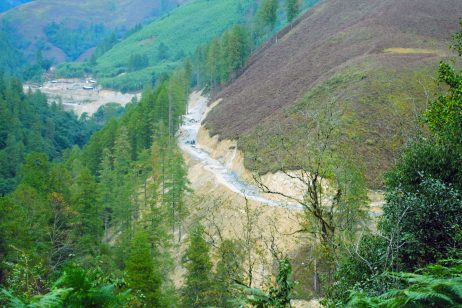Rajeev Bhattacharyya

Hectic construction and repair of roads and bridges are visible in large parts of the Indian border state of Arunachal Pradesh, which witnessed military action during the brief war between India and China from October 20 to November 20, 1962.
Six decades after the end of the war, and despite countless rounds of negotiations between the two neighbors to resolve the border dispute, tensions continue to simmer. They have triggered occasional clashes.
The schemes to upgrade overland connectivity infrastructure are part of a larger project being implemented by the Indian government to improve infrastructure and enhance surveillance along the 3,488 kilometers-long disputed border with China.
China claims 90,000 square kilometers in India’s frontier region of the northeast, roughly including the whole of Arunachal Pradesh. There have been frequent reports of intrusions by the People’s Liberation Army into territory under Indian control. There have been allegations too of China surreptitiously grabbing chunks of territory in Arunachal Pradesh. Currently, there are six zones considered “disputed” and four that are “sensitive” spread across the state.
Among the projects currently being executed by the Indian government in the border states is the construction of 73 roads of operational significance for better access to the Line of Actual Control (LAC). The government has informed Parliament that 2,094 kilometers of roads were constructed along the border at a cost of around $1.8 billion over the past five years.
Plans have also been firmed up to set up “vibrant villages” to prevent residents from relocating from border zones to areas nearer the cities. Around 185 border villages were depopulated in Uttarakahand in the central sector of the LAC, prompting the government to unveil measures to check the migration. According to a government official, residents have been found to relocate from the border mostly in the twin districts of East Kameng and Dibang Valley.
More troops are being deployed in the regions considered vulnerable to Chinese intrusions. Model border outposts are being created and surveillance mounted in the remote zones through UAVs. The Indian army has also begun efforts to organize itself into Integrated Battle Groups, which are bigger brigade formations deploying a mix of infantry, artillery, tanks, air defense, etc., near the border.
These projects are in response to similar activities by China in its Tibet Autonomous Region (TAR), including an extensive rail network and roads spanning over 60,000 kilometers. There are reports suggesting that military and air bases have been upgraded along the entire border region.
Here’s a peek into some projects that are currently being implemented in Arunachal Pradesh.
No comments:
Post a Comment